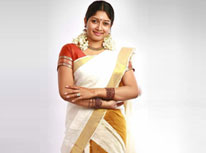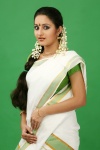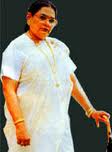|
Fashion
Fashion History
|
|
 The fashion industry is a product of the modern age. Prior to the mid-19th century, most clothing was custom made. It was handmade for individuals, either as home production or on order from dressmakers and tailors. The fashion industry is a product of the modern age. Prior to the mid-19th century, most clothing was custom made. It was handmade for individuals, either as home production or on order from dressmakers and tailors.
By the beginning of the 20th century—with the rise of new technologies such as the sewing machine, the rise of global capitalism and the development of the factory system of production, and the proliferation of retail outlets such as department stores—clothing had increasingly come to be mass-produced in standard sizes and sold at fixed prices.
Although the fashion industry developed first in Europe and America, today it is an international and highly globalized industry, with clothing often designed in one country, manufactured in another, and sold world-wide. For example, an American fashion company might source fabric in China and have the clothes manufactured in Vietnam, finished in Italy, and shipped to a warehouse in the United States for distribution to retail outlets internationally.
The fashion industry has long been one of the largest employers in the United States, and it remains so in the 21st century. However, employment declined considerably as production increasingly moved overseas, especially to China. Because data on the fashion industry typically are reported for national economies and expressed in terms of the industry’s many separate sectors, aggregate figures for world production of textiles and clothing are difficult to obtain.
However, by any measure, the industry accounts for a significant share of world economic output.
The fashion industry consists of four levels: the production of raw materials, principally fibres and textiles but also leather and fur; the production of fashion goods by designers, manufacturers, contractors, and others; retail sales; and various forms of advertising and promotion.
These levels consist of many separate but interdependent sectors, all of which are devoted to the goal of satisfying consumer demand for apparel under conditions that enable participants in the industry to operate at a profit.
Kerala fashion - History
HINDUS
The Namboodiris
The men wore a very simple dress that consisted of two pieces of unstitched white cloth. The men tied around the waist a loincloth called MUNDU measuring 2 ½ yards in length and 1 ½ yards in width. The second cloth was thrown over the shoulders called the MELMUNDU. KAUPINAM, a strip of cloth was the underwear and was worn between the thighs, passed between the thighs and tucked into the front and back of a waist thread. While engaged in religious pursuits, the Namboothiri males dressed themselves in what is called TATTUDUKKUKA, i.e., a cloth six or seven feet long tied around the waist, passed between the thighs and tucked in at the front and back, with the front portion arranged in pleats. The Namboodiris's Mundu was always white in color like the other castes, but had a gold border that distinguished them from the other castes.. Many castes in old days apparently used to wear blue clothes, but white is now practically universal. The Namboodiri men wore a wooden slipper called METHIYYADI . the thighs and tucked into the front and back of a waist thread. While engaged in religious pursuits, the Namboothiri males dressed themselves in what is called TATTUDUKKUKA, i.e., a cloth six or seven feet long tied around the waist, passed between the thighs and tucked in at the front and back, with the front portion arranged in pleats. The Namboodiris's Mundu was always white in color like the other castes, but had a gold border that distinguished them from the other castes.. Many castes in old days apparently used to wear blue clothes, but white is now practically universal. The Namboodiri men wore a wooden slipper called METHIYYADI .
The Namboodiri women were seen in a dress called the PUDAVA, that was a cloth 7 ½ feet in length and about 2 feet in breadth. One end of the cloth was passed between the legs and fixed in the waist at the back, while the other end was wrapped around. This style was also known as TATTUDUKKUKA . The Namboothiri women traditionally used to cover the upper part of the body and carried an OLAKKUDA or MARAKKUDA to cover the face and the body.
Nayar, Kshtriya and Ambalavasi
Their traditional dress also consisted of Mundu, Kaupinam and a random mundu or Neriyatu ( an upper cloth). The women belonging to these communities used to wear a Pudava or Onnarramundu in Tattudukka style.
The upper part of the body was left bare. The Nayar women in Travancore were allowed to dress as they pleased by a Royal Proclamation in 1865.
Avarnas
Ezhavas, Pulayas and Parayans consisted of this group. Their dresses were mainly of a short loin cloth. Small children both boys and girls used to wear only an underwear called Konakam. However at an earlier period the Thanta Pulaya and Nayadi used to wear leafy garments.
And it was the common practice among the Avarnas to leave the upper part of the body bare both among the males and females. The lower caste women were not allowed to cover their breasts and were prevented from wearing any cloth that extended below their knees .
EZHAVAN women of Palghat and the Tiyattis and Mukkuvas of North Malabar sometimes wore dark blue colored attires. Costly dresses like the Silk were never worn by them. The higher classes always used very fine semi transparent cotton clothes that distinguished them from the lower castes
MUKKUVA Women of those times had a practice to wear a black silk cloth similarly tied, but now this system has hence vanished. Later on in the Malabar region a change slowly became visible and women started to wear an the upper cloth called (Torttumundu) or a short bodice that covered their breasts..
Palm Umbrella
No turban was worn, according to the higher caste people as it was beyond their dignity to cover the head; however, there existed a universal practice to carry an umbrella. The umbrella of those times was made of leaves of palm tree or Palmyra. It had a long bamboo handle of which the length increased according to the dignity of the person carrying it. It was further stipulated that it should be carried with the end of the handle in the palm of the hand and the arm stretched down at full length. After the British rule, the natural umbrella gave way to the European black umbrella.
The lower castes often twisted a small cloth loosely round the head in the form of an embryo turban, but this was to be removed in the presence of Superiors as it was customary to be bare above the waist while standing before them.
Characteristic of the west coast was the umbrella or the mushroom shaped hat made of Palmyra leaves which fishermen and agricultural workers invariably wore as an admirable protection against the heat of the sun and the rains. The Nayar woman also carried a similar hat with a crown too small for the head in their hands instead of an umbrella.
Hair Style
In the olden days the Malayali as rule shaved his head, face and body all over leaving only a small oval patch of hair on the top of the head in front called 'KUDUMI' .This patch of hair was allowed to grow long and was twisted to a knot and hanged over the fore-head in front or to one side, usually the left. This way of wearing the hair was universal and was distinctive of the west coast Hindu.
Some of the CHERUMANS and similar low castes shaved their head completely and left no trace of any hair on their person.
The devil dancers and their likes in the ancient times wore the hair long; the hill tribes also used to wear their hair long but with the advent of civilization they too took to KUDUMI.
The Namboodiri was also seen with a beard, but the singular reason was that it was a period of mourning (diesta) for him . Other castes were also forbidden from shaving when in mourning.
Women grew their hair long. They used many natural herbs and oils available in the soil to nourish their hair. Women wore their hair plaited in the middle and either drew tight to the ears and tied in a chignon or else twisted up in front in a sort of cone. The latter was the common custom in the south, except among Namboodiris.
CHRISTIANS
The clothes of Christians were relatively similar to those worn by the other communities. The male Christians dressed in the usual Dhoti and Shirt
.
The Christian woman wore a white mundu about seven yards in length and 1 ¼ yards in breadth with a fan like frill at the back. They used to cover the upper part of the body with full or half sleeved white blouses called ‘Chatta’. While going out, they threw over their shoulders and bosom another piece of cloth called ‘Kavani’. The women took great interest to beautify the Kavani with embroidery works. Chela(Sari) and blouse were used by the Nadar and Latin Christians. full or half sleeved white blouses called ‘Chatta’. While going out, they threw over their shoulders and bosom another piece of cloth called ‘Kavani’. The women took great interest to beautify the Kavani with embroidery works. Chela(Sari) and blouse were used by the Nadar and Latin Christians.
Boys wore small trousers with straps on the chest and the back. It was known as the Valli Trouser. Girls wore frocks and skirts. Teenage girls wore long skirt and were also seen in chatta and mundu.
MUSLIMS
The Muslims form an integral part of the community. They owned an entirely different dressing culture. According to their religious concept only the women’s face and palms should be visible in front of outsiders. In olden days they wore a piece of white cloth called ‘Kachimundu’. It didn’t have a silk border but blue and purple coloured borders. It covered from waist to ankle. They covered their head with a piece of cloth called as Thattam. But in the very olden days it was called as ‘Patturumala’. Both cotton and silk material were used for this. The upper part was covered by a long blouse ( shirt like without collars) with full sleeves. This type of dress was known as Kachi and Thattam.
The Mappilla men’s ordinary dress was mundu or cloth generally with white or purple border or orange, green or plain white. It is tied on the left (Hindus tie it on the right) and kept in position by a waist string to which are attached one or more elassus( small cylinders) of gold, silver or baser metal, containing texts from the Koran or magic chants. They used shirt along with mundu. A small cap of white or white & black is very commonly worn and round this an ordinary turban or some bright coloured scarf may be tied. Mappillas shave their head clean. Beards are worn frequently especially by old people and “Tangals” (Religious person in Mosque). Hajis or men who have made their pilgrimage to Mecca and other holy men often dye the beard red.
TRIBES
There are different divisions of tribal people living in different parts of kerala. They differ both in their living and clothing habits.
In the past, the tribes like the Mala Arayan, Daliyan, and Malavedan used to wear leafy garments. Koraga women believed that they pleased the Gods by using grass or leaf skirts. The usual attire of the hill tribes was a short loin cloth. The torso was kept uncovered. Later, a piece of cloth was used to cover the upper body.
The PANIYA Women wore a loin cloth reaching to the knee and another cloth over the chest. The upper cloth was wound round the body under the shoulders. One corner of it was taken over the right shoulder from behind and tied to the top of the front portion over the breasts so that it did not slip down.
The KURICHIAN women wore a traditional dress that consisted of a CACHALA (dhoti) up to the knees and Melkuttu a piece of cloth tied across the left shoulder to cover the breast.
The PALIYA women wore a Chela (color Red Sari)
Kurumar
The Kurumars, another category of tribal people wear a dress that covers the upper part of the body. They used a mundu known as the MADAKKUMUNDU which was tucked in the left and reached till the knees. Men used a towel known as 'Thambran Mundu'. On special occasions they used silver, Iron, bronze and gold ornaments.
Theinkurumar
These were the tribals from Kannur and Kasargod who dressed differently using tree-barks and leaves. Ladies used a handful of leaves in the front and back. They remained naked above their waist.
Mannanmar
They are seen not only in Kerala but also in Tamilnadu.They wore long Sarees called CHELLA with which they covered their breast. The gents used MUNDU. They wore lots of chains to adorn their necks. They wore bangles of copper and bronze and also ring of copper in their hand.
Yogis
The yogis are SHAIVAS who have come from Northern India to Southern India. Though they settled in North India, their main centers in the south are KASARGOD, Payyanur, Taliparambu, Azhikode, Badagara and Calicut. The men used a towel to dress themselves. The ladies covered their breast with the same towel that they wore on their person. For Pooja and other ceremonial occasions the Gurus wore silk dresses.
Adiyans
They are the main tribal community in Wyanad. Men covered themselves from the waist to knee with MUNDU. Ladies dressed themselves with a single saree. Men wore earrings called Mathavu in the lower ear and wore a heavy earring called 'KADUKKAN',. They had a practice of designing 'tattoo'.
Drastic changes have risen in these traditional dressing habits. No restrictions on wearing upper garments prevail now. The western cultural influence and contact brought much uniform pattern of dressing among these tribals. |
|
|
|
|
KeralaRealEstate.com
Sell / Buy properties, land, buildings, flats, houses, villas,commercial properties in kerala
Keralaevents.com
Event Management Kerala, Kerala Business Events, Kerala Upcoming Events
Keralataxi.com
Kerala Taxi, Kerala Tourism, Kerala Holidays, Tourist Cars, Cabs, Luxury vehicles
|
|
| |
|
|
| |
|




 The fashion industry is a product of the modern age. Prior to the mid-19th century, most clothing was custom made. It was handmade for individuals, either as home production or on order from dressmakers and tailors.
The fashion industry is a product of the modern age. Prior to the mid-19th century, most clothing was custom made. It was handmade for individuals, either as home production or on order from dressmakers and tailors. the thighs and tucked into the front and back of a waist thread. While engaged in religious pursuits, the Namboothiri males dressed themselves in what is called TATTUDUKKUKA, i.e., a cloth six or seven feet long tied around the waist, passed between the thighs and tucked in at the front and back, with the front portion arranged in pleats. The Namboodiris's Mundu was always white in color like the other castes, but had a gold border that distinguished them from the other castes.. Many castes in old days apparently used to wear blue clothes, but white is now practically universal. The Namboodiri men wore a wooden slipper called METHIYYADI .
the thighs and tucked into the front and back of a waist thread. While engaged in religious pursuits, the Namboothiri males dressed themselves in what is called TATTUDUKKUKA, i.e., a cloth six or seven feet long tied around the waist, passed between the thighs and tucked in at the front and back, with the front portion arranged in pleats. The Namboodiris's Mundu was always white in color like the other castes, but had a gold border that distinguished them from the other castes.. Many castes in old days apparently used to wear blue clothes, but white is now practically universal. The Namboodiri men wore a wooden slipper called METHIYYADI . full or half sleeved white blouses called ‘Chatta’. While going out, they threw over their shoulders and bosom another piece of cloth called ‘Kavani’. The women took great interest to beautify the Kavani with embroidery works. Chela(Sari) and blouse were used by the Nadar and Latin Christians.
full or half sleeved white blouses called ‘Chatta’. While going out, they threw over their shoulders and bosom another piece of cloth called ‘Kavani’. The women took great interest to beautify the Kavani with embroidery works. Chela(Sari) and blouse were used by the Nadar and Latin Christians.